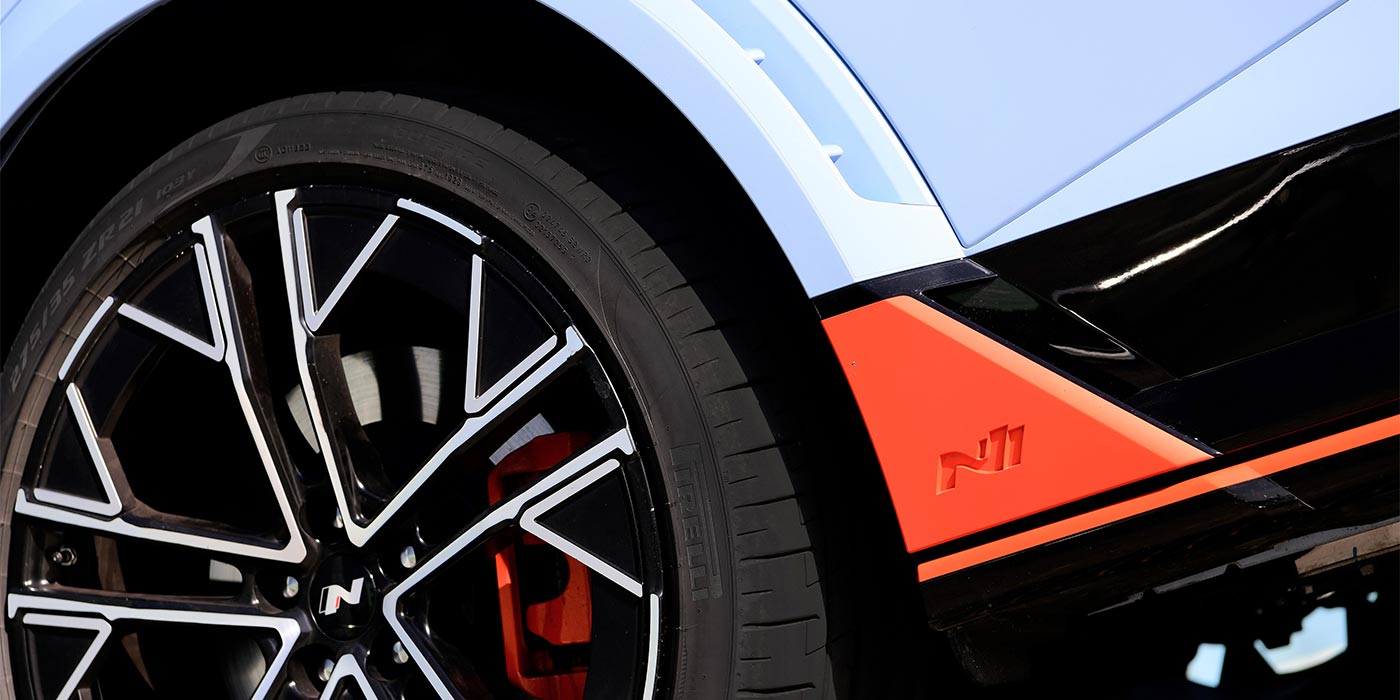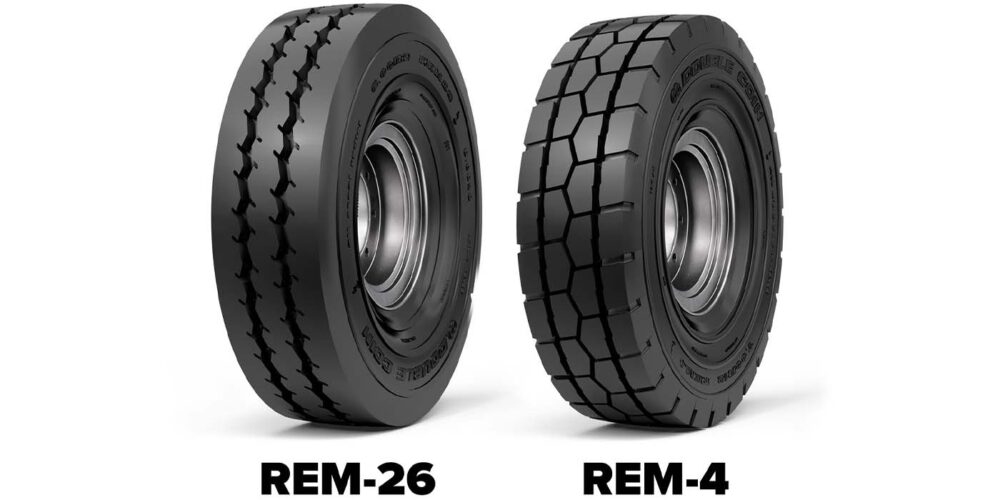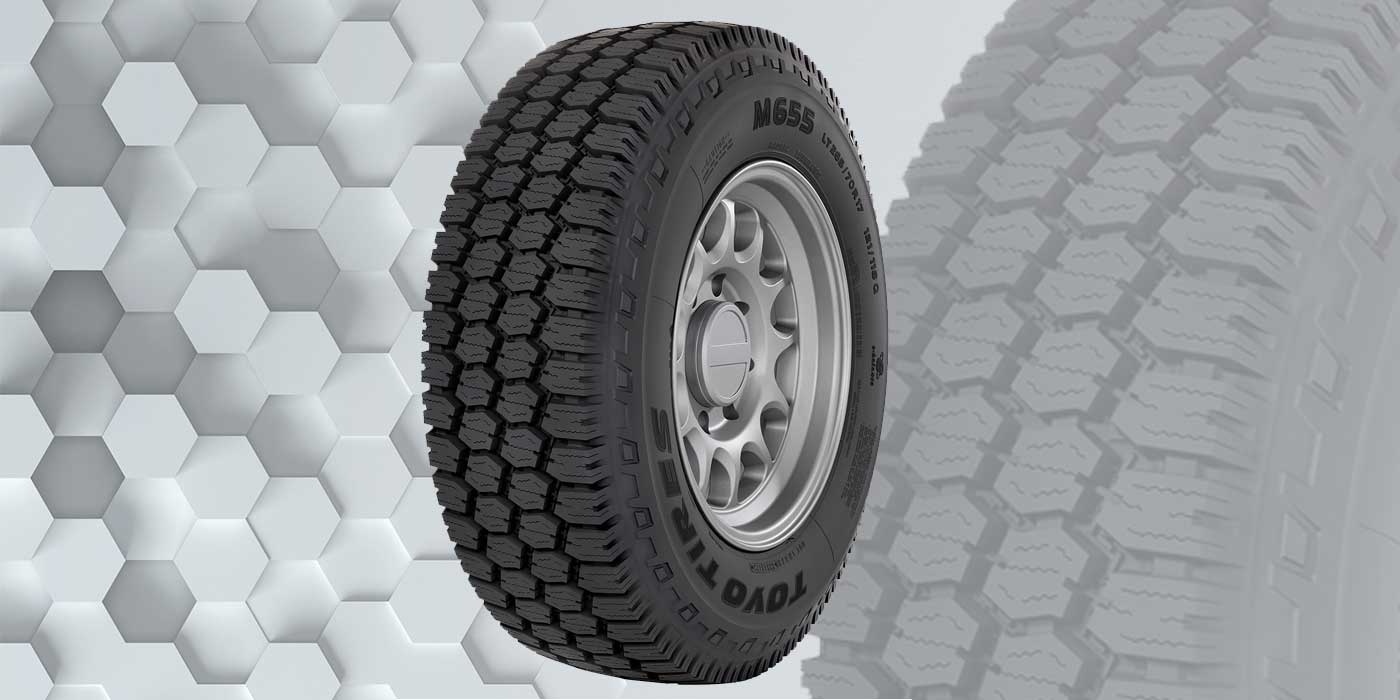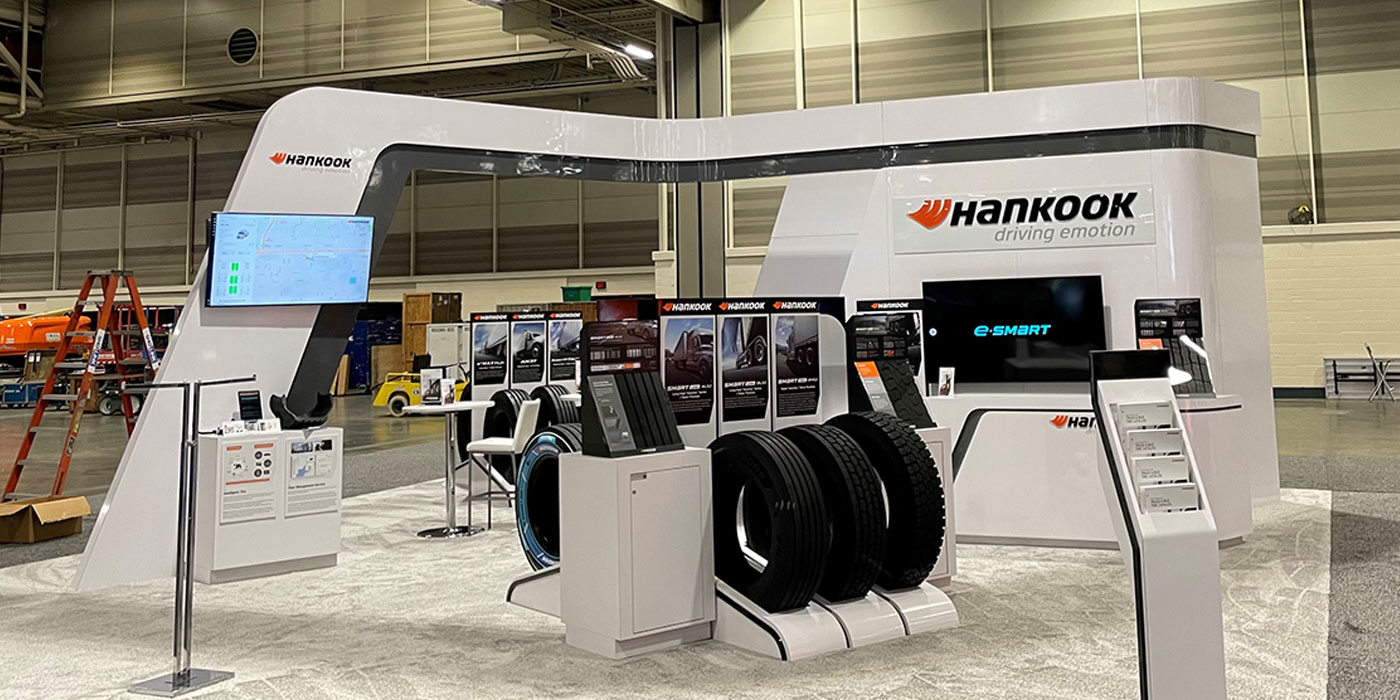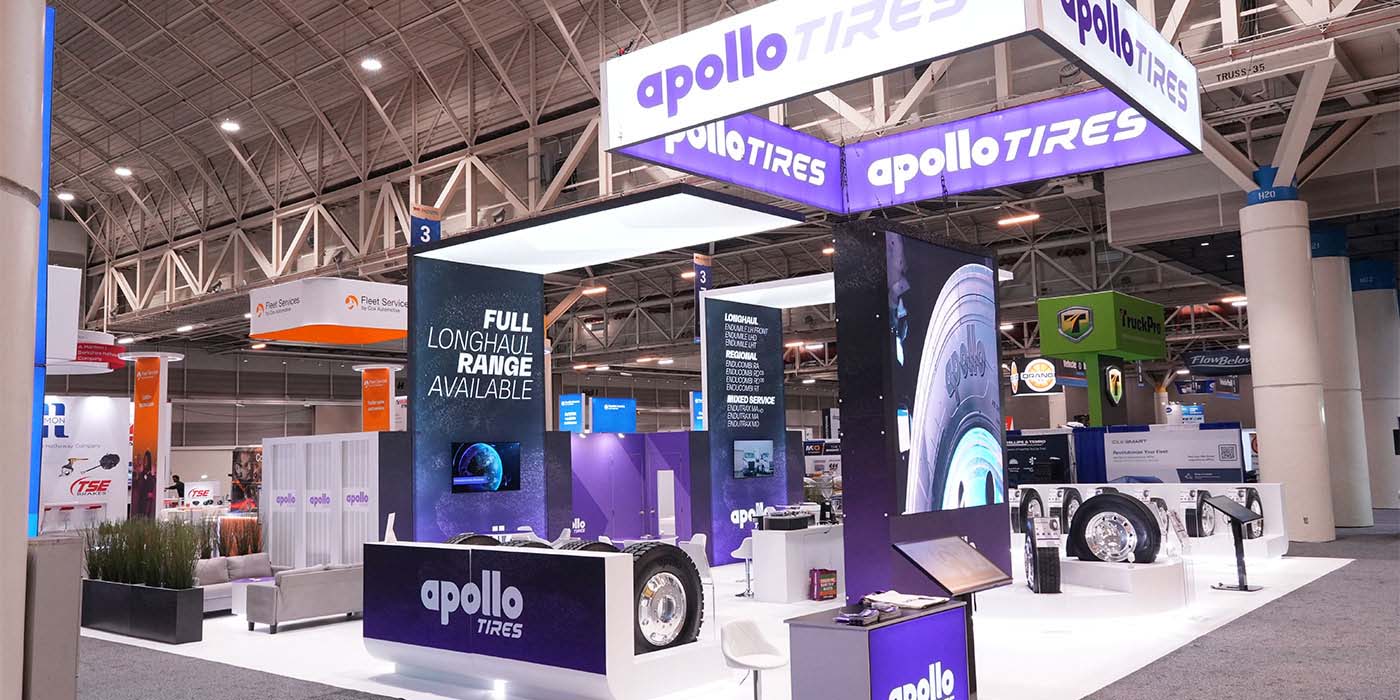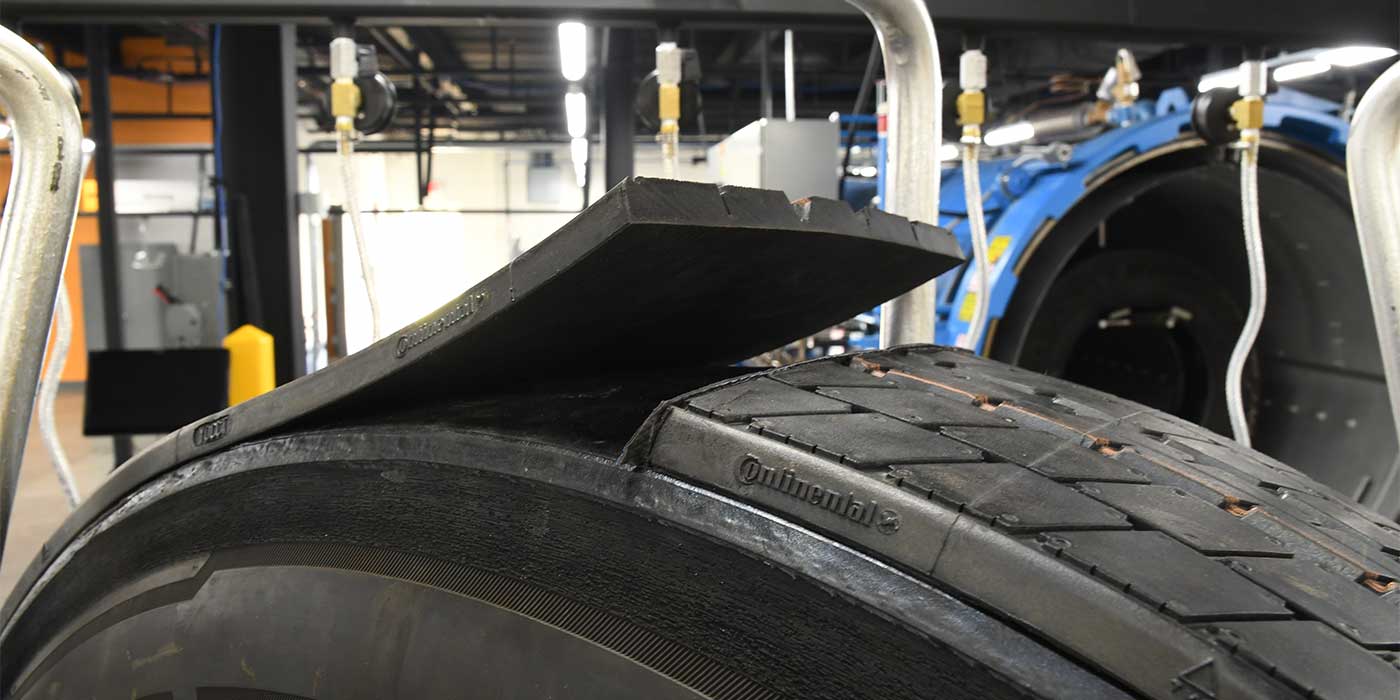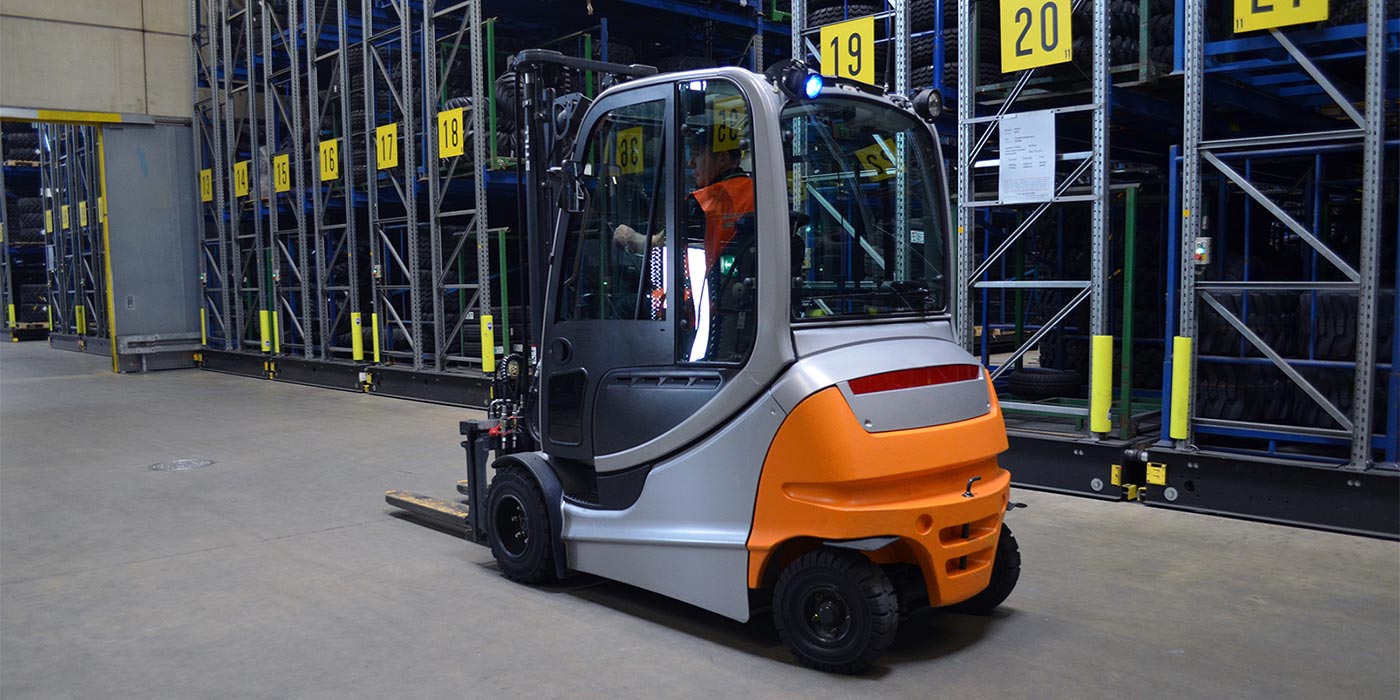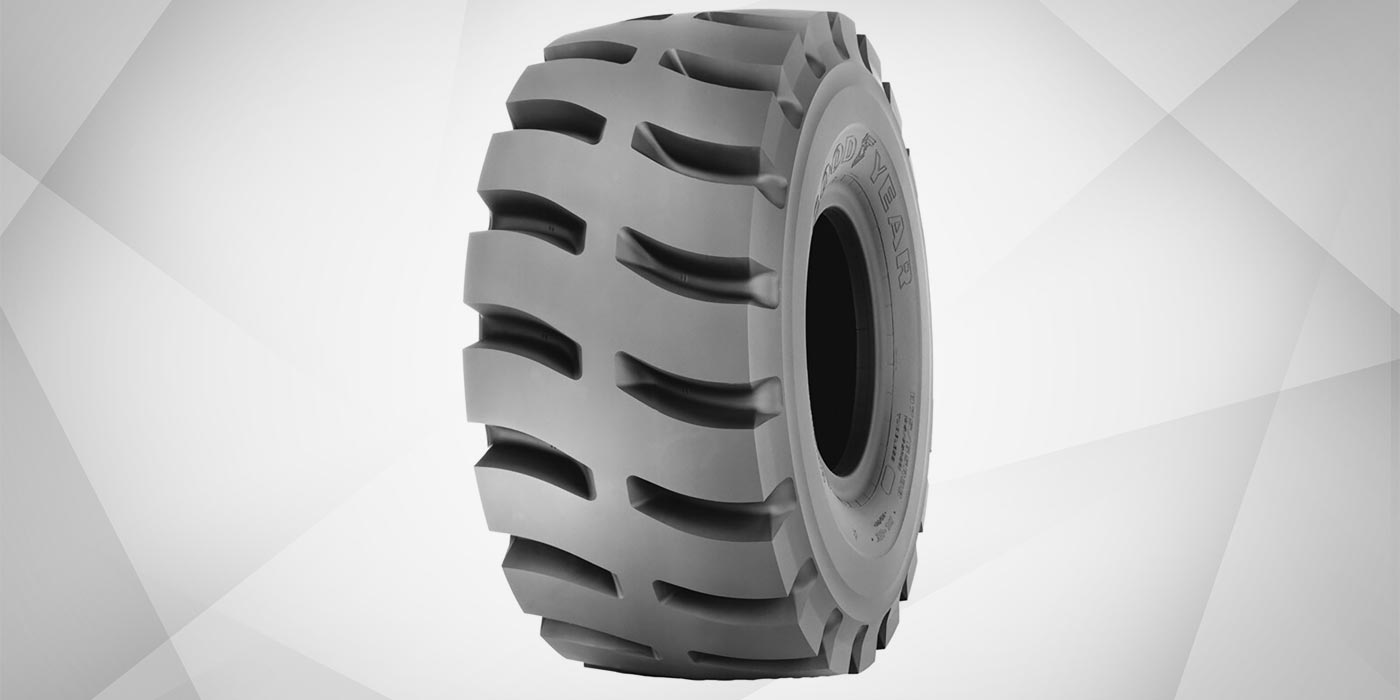More than a few times, I’ve heard people explain that the basic difference between car tires and truck tires is their obvious relative size: truck tires are bigger!
This fact is certainly true in the majority of cases, but even that explanation is becoming a bit marginal. While overall outside diameters remain quite different (at least today), wheel diameter sizes are another story. With 20-inch and 22-inch tire and wheel packages becoming more common on cars and SUVs, that size gap has all but closed. And, with 24-inch to 30-inch tires and wheels finding more applications, wheel diameter is no longer a defining trait of medium truck tires.
Two opposing trends are blurring some of the traditional distinctions between these tires. On the passenger side, styling and performance are the primary motivations behind monstrous tire/wheel packages.
Then, on the truck tire side, high load capacity 15-inch and 16-inch commercial tires are rapidly gaining in popularity, especially on parcel delivery and local distribution trucks. These small, heavy-duty tires allow for truck bodies with greater cube capacity, and, therefore, improved productivity.
Let’s look closer at some of the distinctions that clearly differentiate car and truck tires.
Load Capacity
Load and inflation ratings are the most basic engineering parameters that relate to the duty cycle capabilities of tires. For passenger car tires (P-metrics), the mandatory sidewall stamping typically reads "Maximum Load X lbs. @ Y psi Maximum Inflation Pressure." Truck tires, on the other hand, are typically marked "Maximum Load X lbs. @ Y psi." The difference is subtle but very significant, and the following points should be noted:
®€′ For passenger tires, maximum load capacity and maximum cold inflation pressure limits are always stated on the sidewall and clearly relate to one another. They should not be exceeded. Load adjustments may also be required for applications with certain tire service or vehicle speed combinations.
®€′ For truck tires, only the maximum load capacity is stated. The cold inflation pressure stated is simply the minimum acceptable pressure corresponding to that maximum load at normal highway speeds. It is not a maximum value and should, in fact, be adjusted in accordance with tiremaker recommendations for different operating conditions. Speed, axle position, wear patterns and maintenance practices are typical variables considered when setting inflation pressures.
The inflation pressure details on tire sidewalls are informative. However, they are not necessarily the same as application-specific inflation pressures recommended for individual service conditions.
For all vehicle types, operators should first follow specific inflation recommendations and load restrictions given by the vehicle manufacturer, provided there is no conflict with any recommendations from the tire manufacturer or with tire industry standards.
For clarification of industry standards, contact the Tire and Rim Association (www.US-TRA.org) or the Rubber Manufacturers Association (www.rma.org).
In all cases, inflation recommendations, including those stated as "maximum," are cold pressure values (measured with tires at ambient temperatures) and do not include any pressure build-up due to vehicle operation. It is not unusual for passenger tire inflations to increase from 2 psi to 5 psi, and larger medium commercial truck tire inflations to increase from 5 psi to 15 psi, due to heat generated by normal highway service.
Inflation Pressures
Inflation pressures, as well as loads, can significantly affect vehicle handling and stability. This is more evident in passenger cars and other light duty applications, as tires on these vehicles are usually designed to operate at lower inflation pressures than truck tires. Typical passenger tire pressures range from approximately 26 psi to 41 psi, compared to large, over-the-road truck tires that operate in the 100-psi range.
An underinflation of 5 psi, for example, would represent 17% underinflation of a tire with a 30-psi target, compared to just a 5% underinflation of a tire with a 100-psi target. Some passenger and light truck vehicles also specify different inflation pressures for front and rear axles. This may be to allow for vehicle loading and/or weight distribution, but may also relate to vehicle handling/stability.
If P-metric tires are used in light truck, SUV, trailer, or multipurpose passenger vehicle applications, a load service factor of 1.10 applies. This means that the passenger tire selected must be rated to carry at least 10% more load than if it were being used on a traditional passenger car. Practically, this results in fitting tires that are at least one size larger to these vehicles.
Truck tires, on the other hand, are designed with higher center-of-gravity loadings expected and do not require this kind of size or load rating adjustment when fitting a tire to a vehicle.
Another caution applies to vehicles subject to asymmetric loading, such as those equipped with heavy on-board servicing or loading/unloading equipment. Some large RVs also fall in this category, with holding tanks, extra fuel tanks, air conditioning units, etc. installed on one side of the chassis.
Tire inflation pressures for such applications should cover the heaviest loaded wheel position across each axle. This can only be determined by weighing each axle end. Therefore, when determining target inflation pressures for these vehicles, one cannot simply weigh the axle and divide that load equally among the tires across the axle.
The Maintenance Factor
The observations above deal with "target" inflation pressures and loading. In real-world service, of course, tire care and maintenance practices influence actual tire operating inflation pressures and, in turn, tire performance.
One primary function of periodic inflation pressure checks and fleet surveys should be to quantify the effectiveness of routine maintenance programs. Generally, longer intervals between tire service/maintenance should relate to higher tire reserve load capacity. Since tire load carrying capability at any given inflation is fixed by design, this translates to some increase in target inflation pressures for fleets with longer intervals between checks, within guidelines endorsed by tire suppliers.
Surely, the basic size and construction features of car and medium truck tires are enough to tell them apart. It’s doubtful, though not impossible, that they will ever reach a point of being nearly identical in every conceivable way.
As fleets continue to reach for every cent of profit and consumer tastes evolve, who knows in what direction tire designs will head?
Perhaps in the distant future, all Class 1 through 8 vehicles will ride on super ultra-high performance, asymmetric Z-rated 11R28.5s. At least for today, though, the true differences between the two go far deeper than just size.




